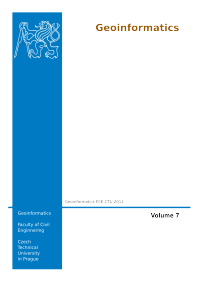Klet Observatory – European Contribution to Detecting and Tracking of Near Earth Objects
DOI:
https://doi.org/10.14311/gi.7.9Keywords:
astrometry, Near Earth Objects, telescopeAbstract
Near Earth Object (NEO) research is an expanding field of astronomy. Is is important for solar system science and also for protecting human society from asteroid and comet hazard. A near-Earth object (NEO) can be defined as an asteroid or comet that has a possibility of making an approach to the Earth, or possibly even collide with it. The discovery rate of current NEO surveys reflects progressive improvement in a number of technical areas. An integral part of NEO discovery is astrometric follow-up fundamental for precise orbit computation and for the reasonable judging of future close encounters with the Earth including possible impact solutions. A wide international cooperation is fundamental for NEO research. The Klet Observatory (South Bohemia, Czech Republic) is aimed especially at the confirmation, early follow-up, long-arc follow-up and recovery of Near Earth Objects. It ranks among the world´s most prolific professional NEO follow-up programmes. The first NEO follow-up programme started at Klet in 1993 using 0.57-reflector equipped with a small CCD camera. A fundamental upgrade was made in 2002 when the 1.06-m KLENOT telescope was put into regular operation. The KLENOT Telescope is the largest telescope in Europe used exclusively for observations of minor planets (asteroids) and comets and full observing time is dedicated to the KLENOT team. Equipment, technology, software, observing strategy and results of both the Klet Observatory NEO Project between 1993-2010 and the first phase of the KLENOT Project from March 2002 to September 2008 are presented. They consist of thousands of precise astrometric measurements of Near Earth Objects and also three newly discovered Near Earth Asteroids. Klet Observatory NEO activities as well as our future plans fully reflect international strategies and cooperation in the field of NEO studies.References
Chamberlin A. B., Chesley S. R., Chodas P. W., Giorgini J. D., Keesey M. S., Wimberly R. N. and Yeomans D. K. 2001. Sentry: An Automated Close Approach Monitoring System for Near-Earth Objects. Bull. Amer. Astron. Soc. 33:1116
Larson S. 2007. Current NEO Surveys. Proceedings of the IAU Symp 236. pp.323-328.
Marsden B.G. and Williams G. V. 1998. The NEO confirmation page. Planetary and Space Science 46:299-302.
McMillan R. S. and the Spacewatch Team. 2007. Spacewatch preparations for the era of deep all-sky surveys. Proceedings of the IAU Symp 236. pp.329-340.
Milani A., Chesley S. R., Sansaturio A., Tommei G. and Valsecchi G. G. 2005. Nonlinear Impact monitoring: Line Of Variation searches for impactors, Icarus 173:362-384
Ticha J, Tichy M. and Kocer M. 2002. KLENOT – KLET OBSERVATORY NEAR EARTH AND OTHER UNUSUAL OBJECTS OBSERVATIONS TEAM AND TELESCOPE. ESA SP-500: ACM 2002. pp.793-796.
Ticha J., Tichy M. and Kocer M. 2007. NEO-related scientific and outreach activities at KLENOT. Proceedings of the IAU Symp 236. pp.371-376.
Tichy M., Ticha J. and Kocer M. 2005. Confirmation of Comet Discoveries. International Comet Quarterly 27:87-92
Ticha J., Tichy M., Kocer M., Honkova M. KLENOT Project 2002-2008, Meteoritics and Planetary Science, vol. 44 (2009), Issue 12, p.1889-1895
http://neo.jpl.nasa.gov – NASA NEO Office
http://minorplanetcenter.net/iau/mpc.html – Minor Planet Center
Downloads
Published
Issue
Section
License
- Authors retain copyright and grant the journal right of first publication with the work simultaneously licensed under a Creative Commons Attribution License that allows others to share the work with an acknowledgement of the work's authorship and initial publication in this journal.
- Authors are able to enter into separate, additional contractual arrangements for the non-exclusive distribution of the journal's published version of the work (e.g., post it to an institutional repository or publish it in a book), with an acknowledgement of its initial publication in this journal.
- Authors are permitted and encouraged to post their work online (e.g., in institutional repositories or on their website) prior to and during the submission process, as it can lead to productive exchanges, as well as earlier and greater citation of published work (See The Effect of Open Access).

